site search
online catalog
UNION CAVALRY GENERAL WILLIAM WELLS’ FIELD BLOUSE: MEDAL OF HONOR FOR GETTYSBURG WHERE HE RODE IN THE LEAD OF FARNSWORTH’S CHARGE; BRIGADE COMMANDER UNDER CUSTER; BLOUSE ACTUALLY WORN IN ONE OF HIS PHOTOS
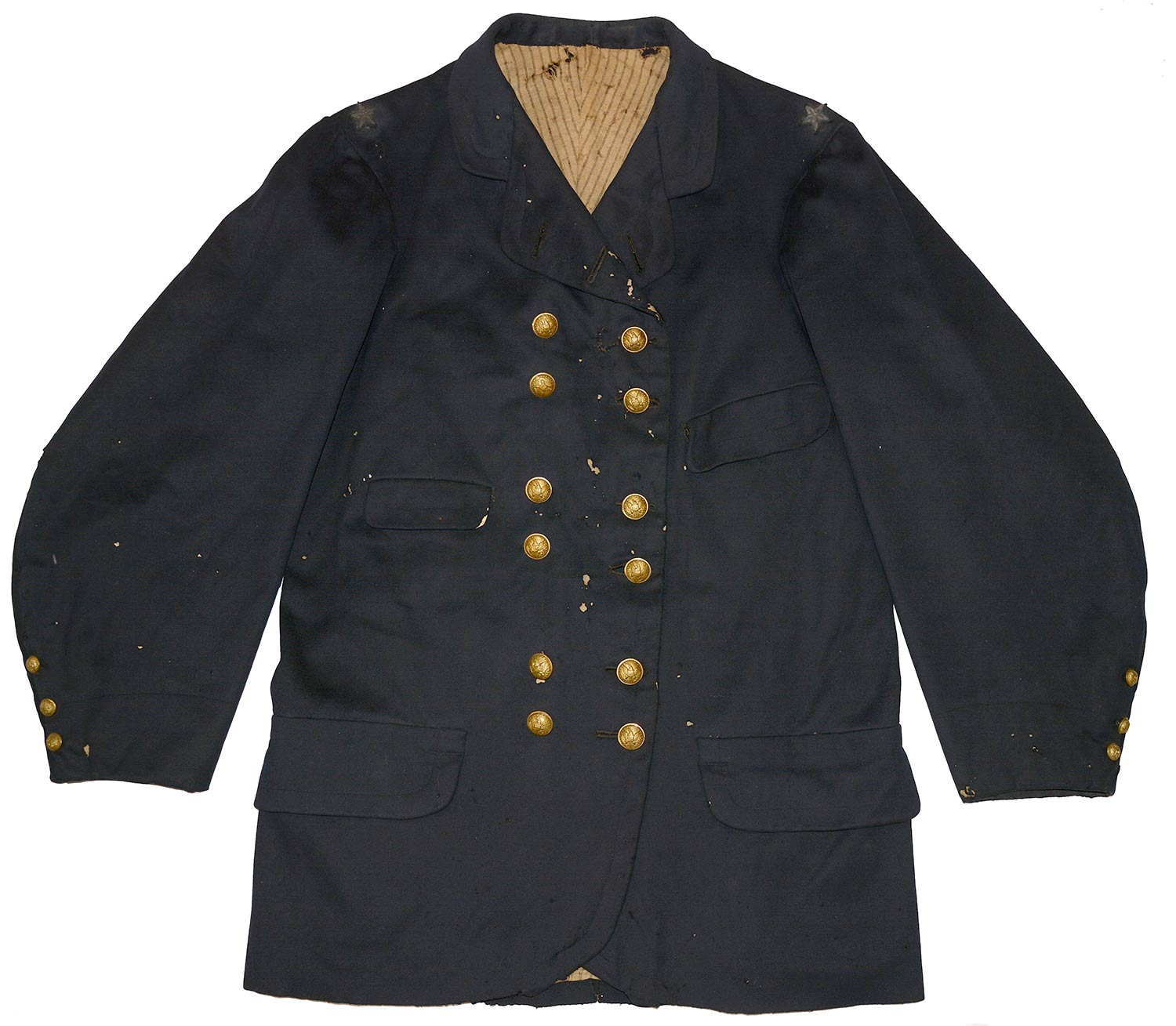
Hover to zoom

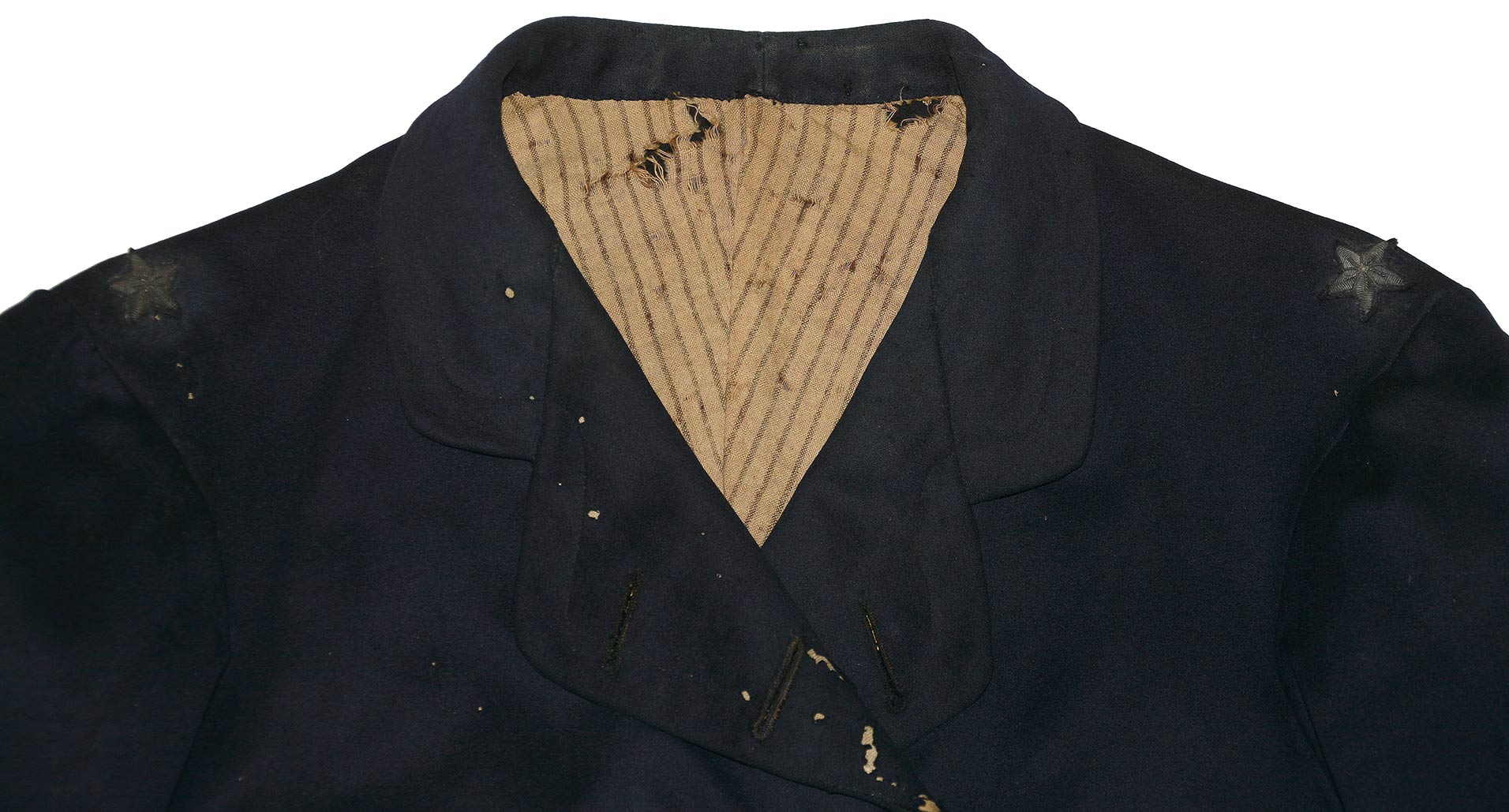
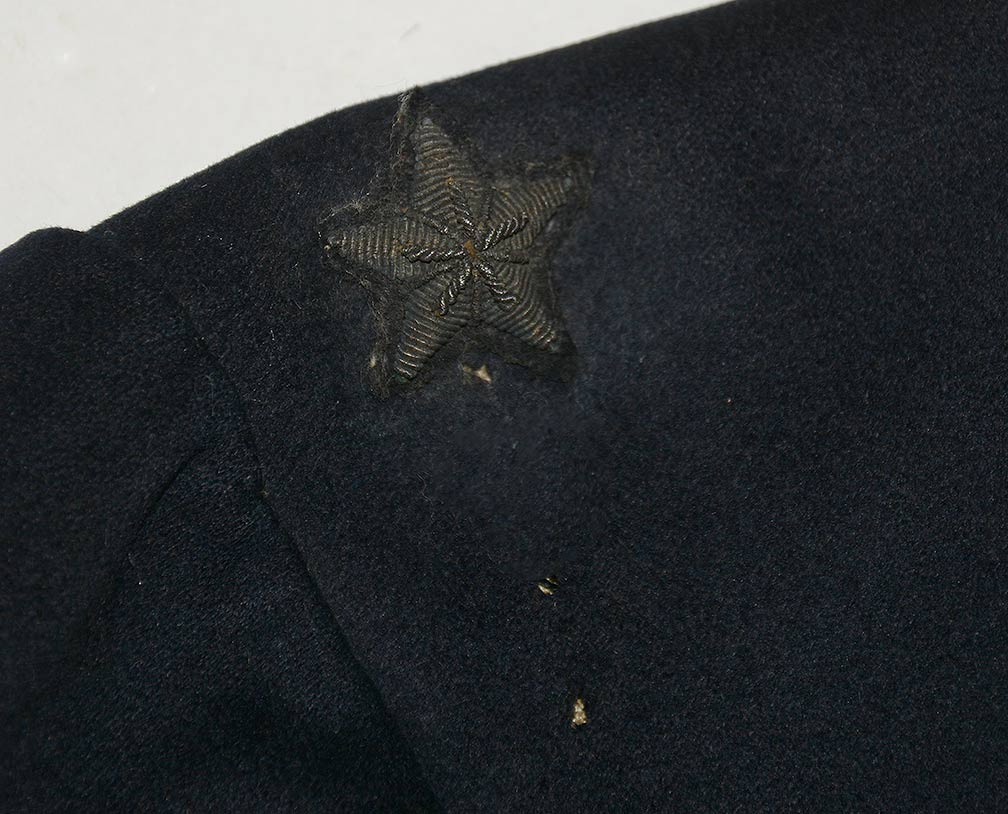
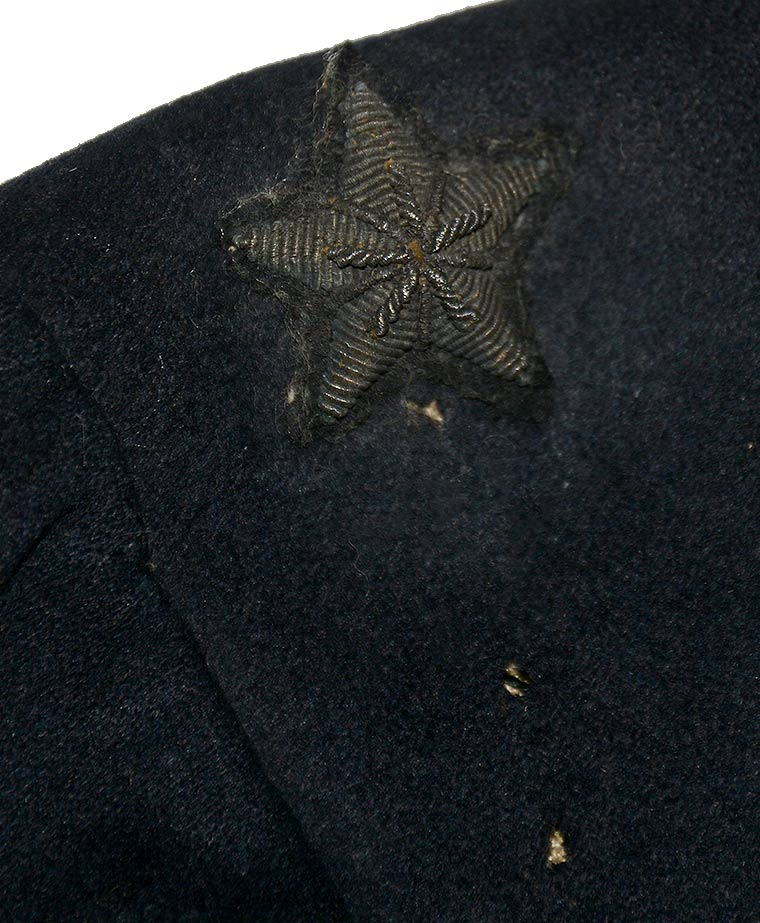
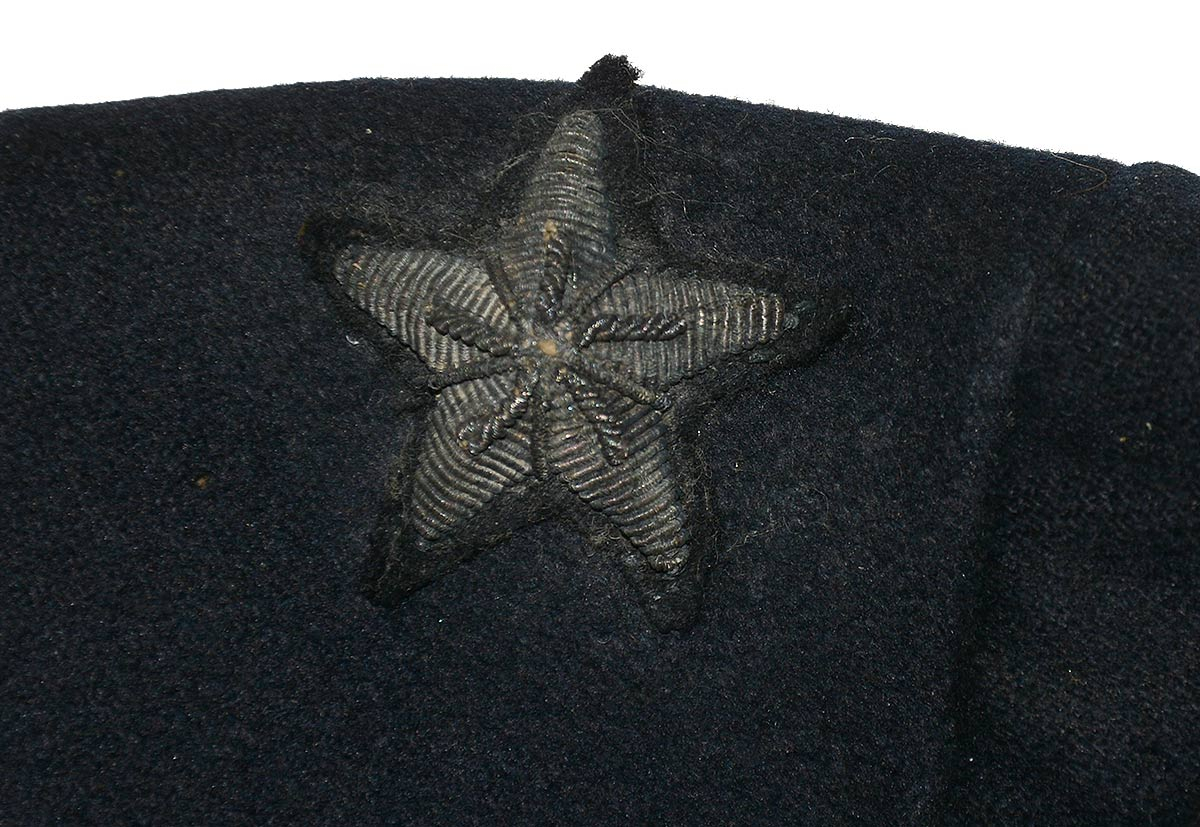
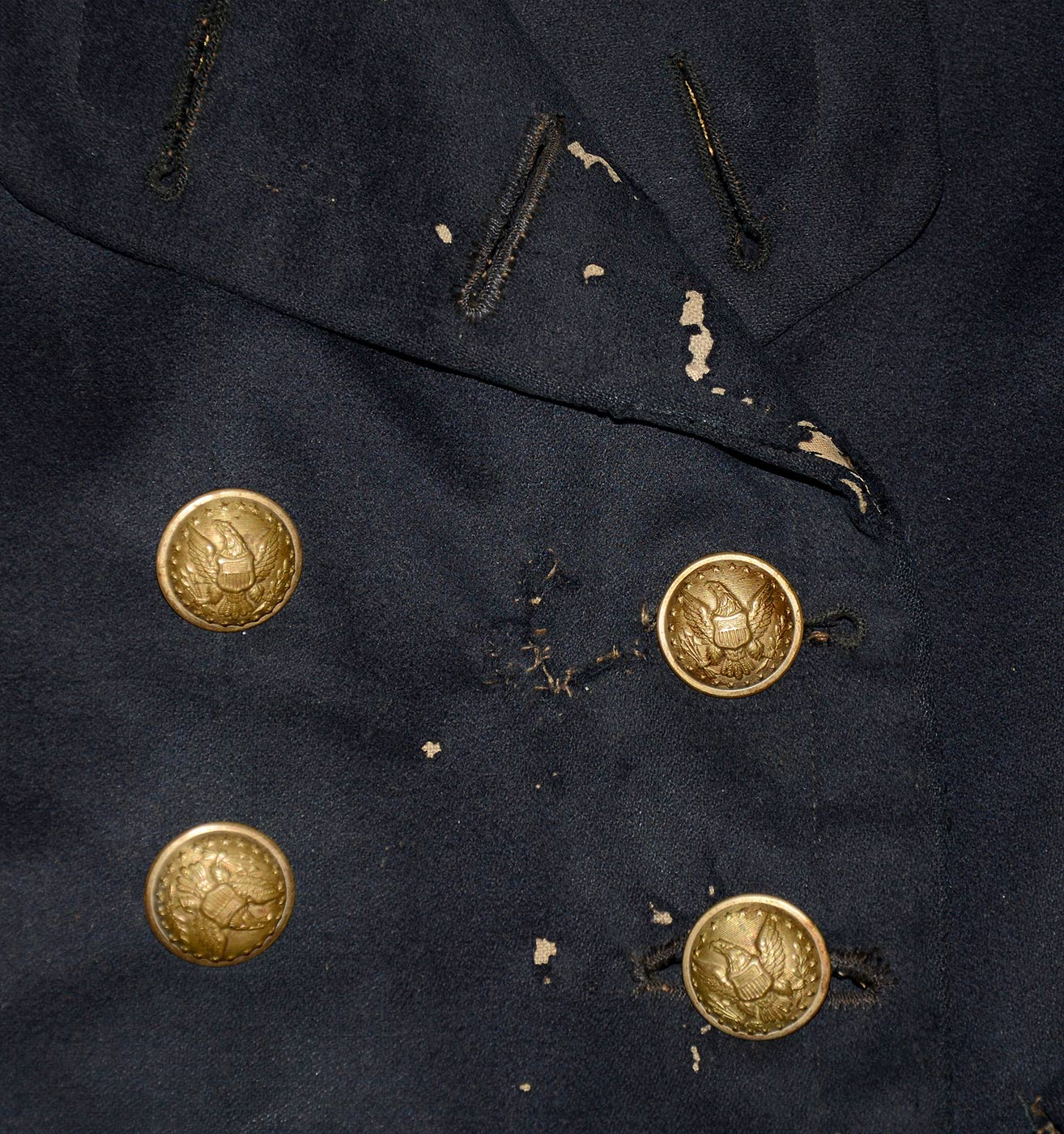
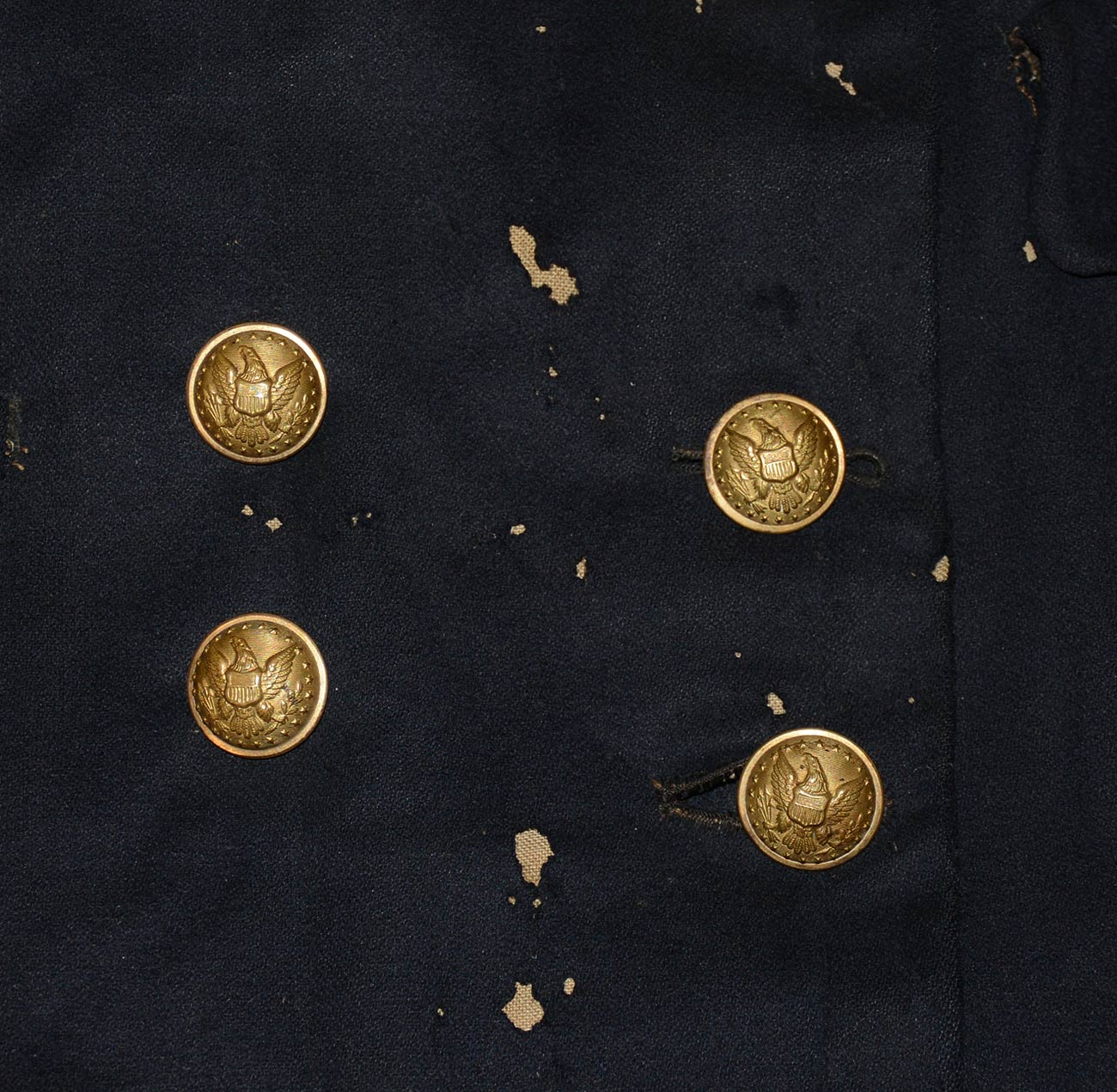
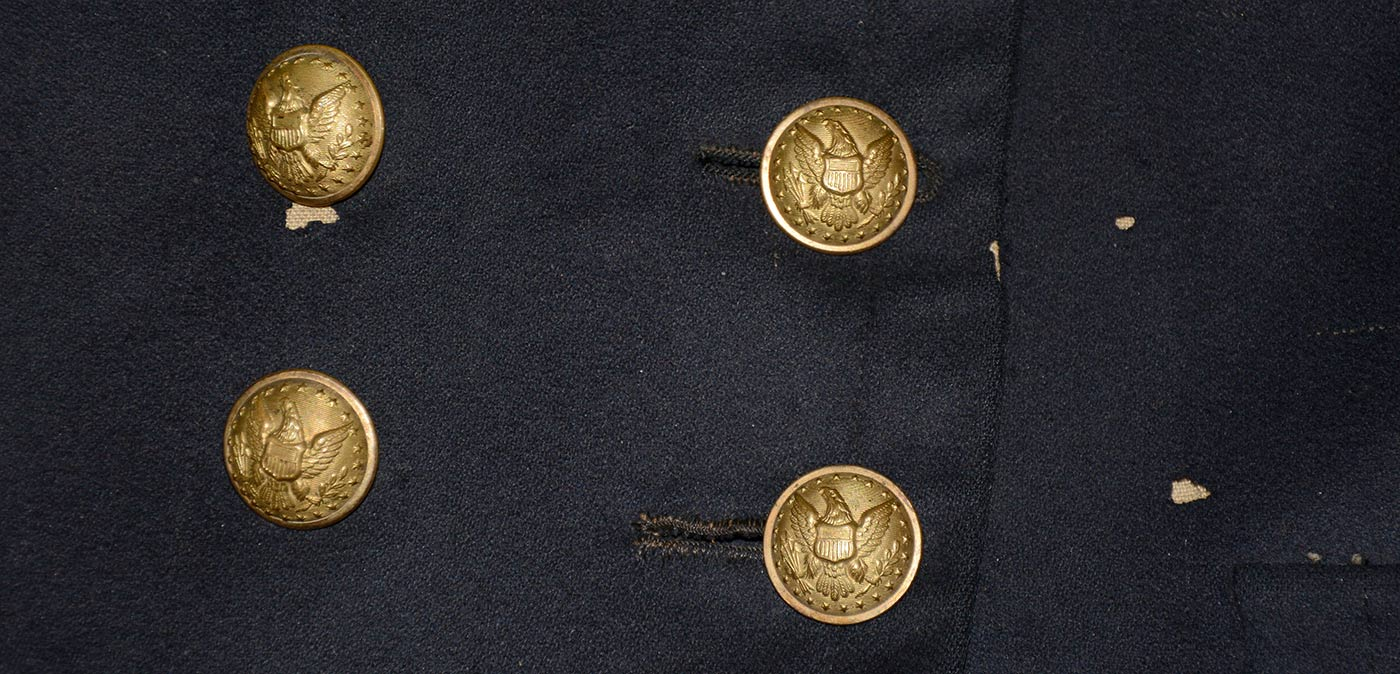
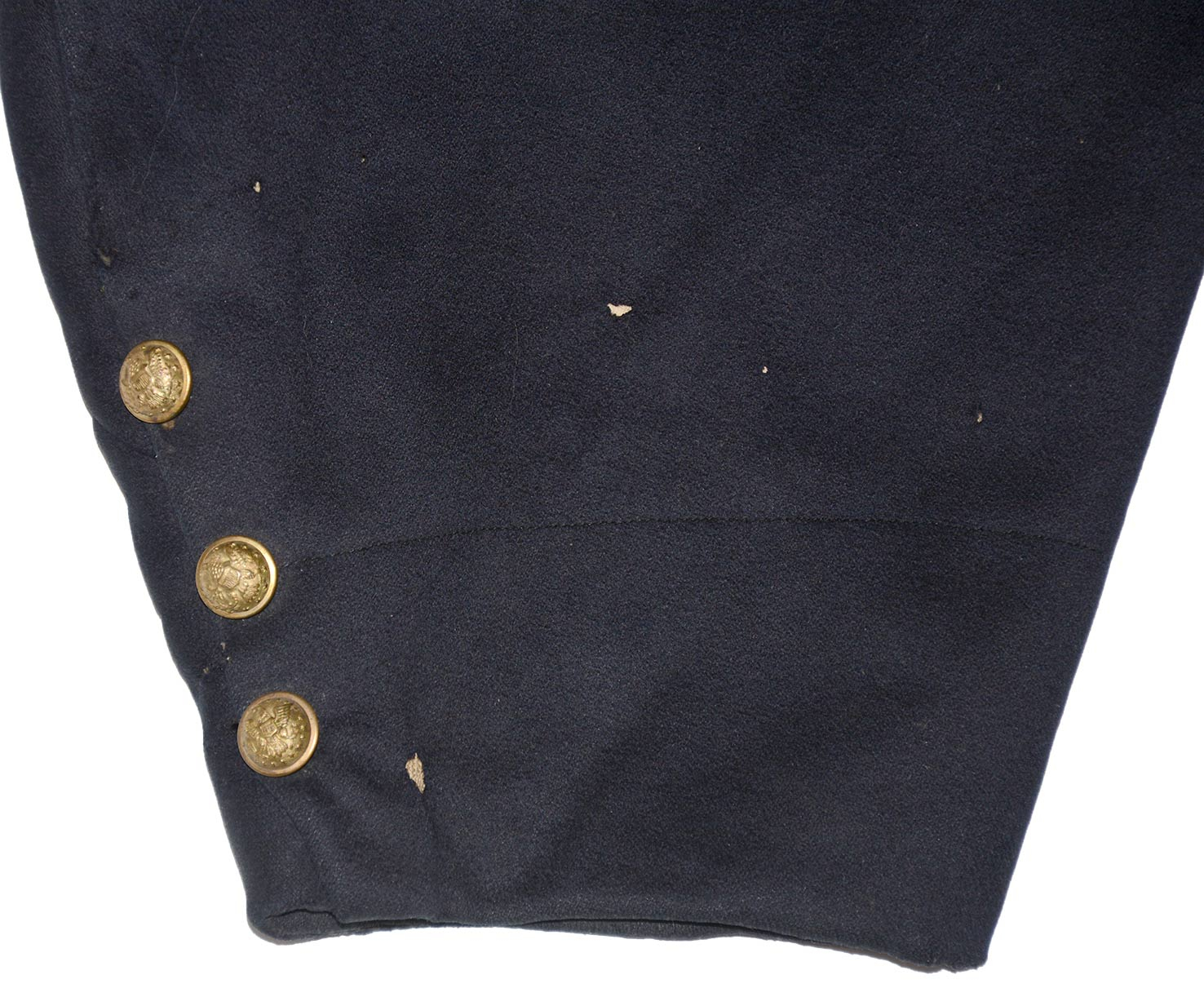
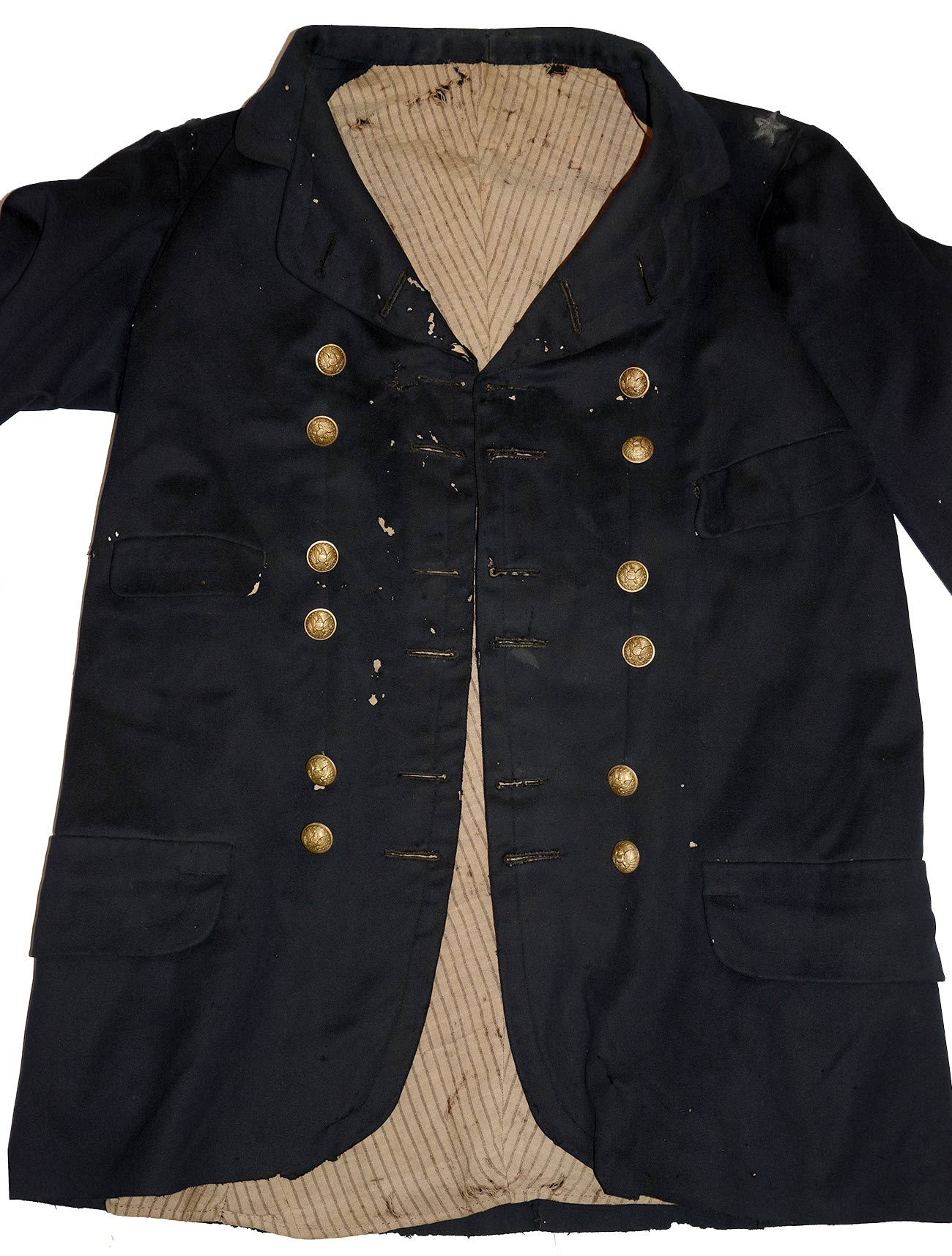
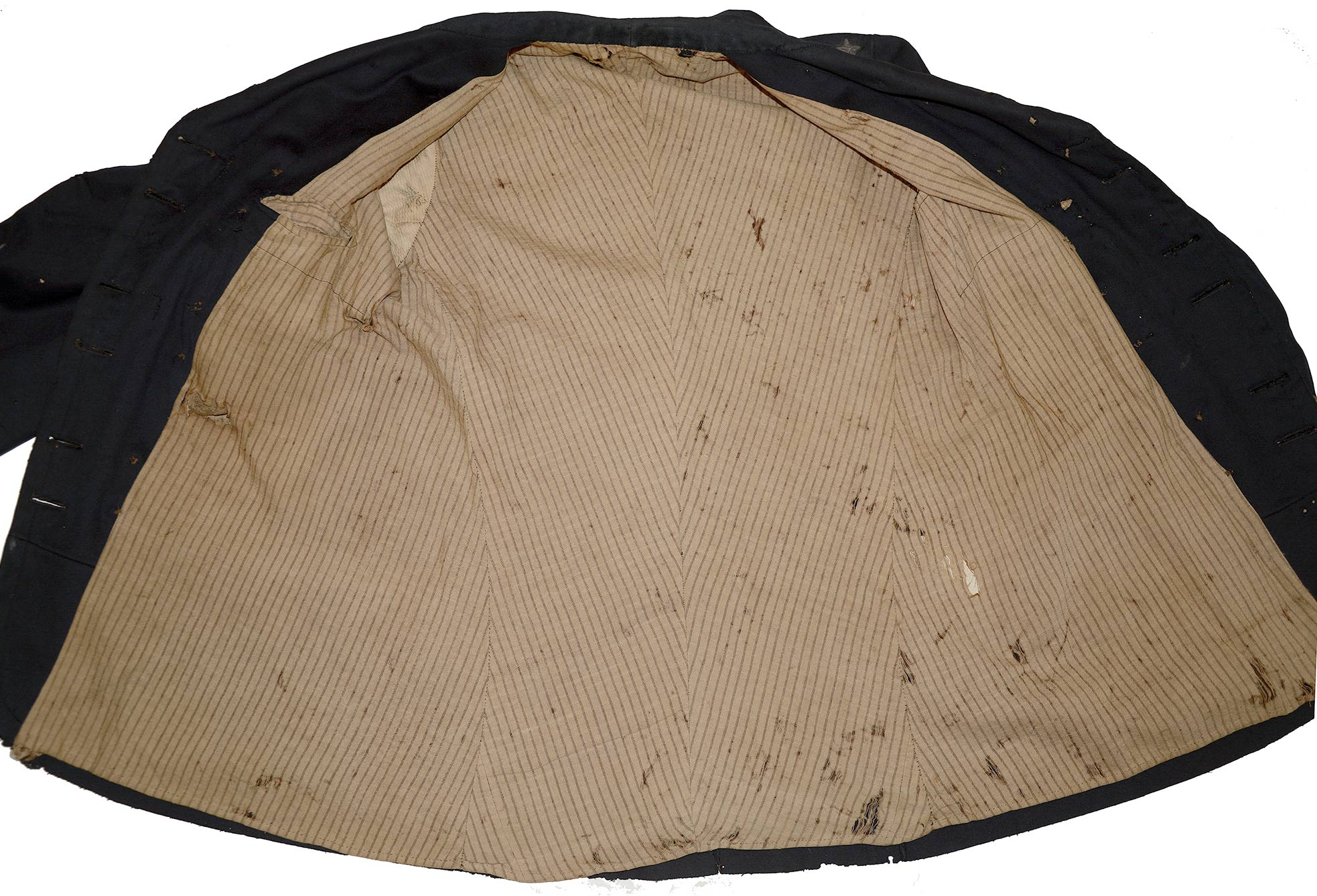
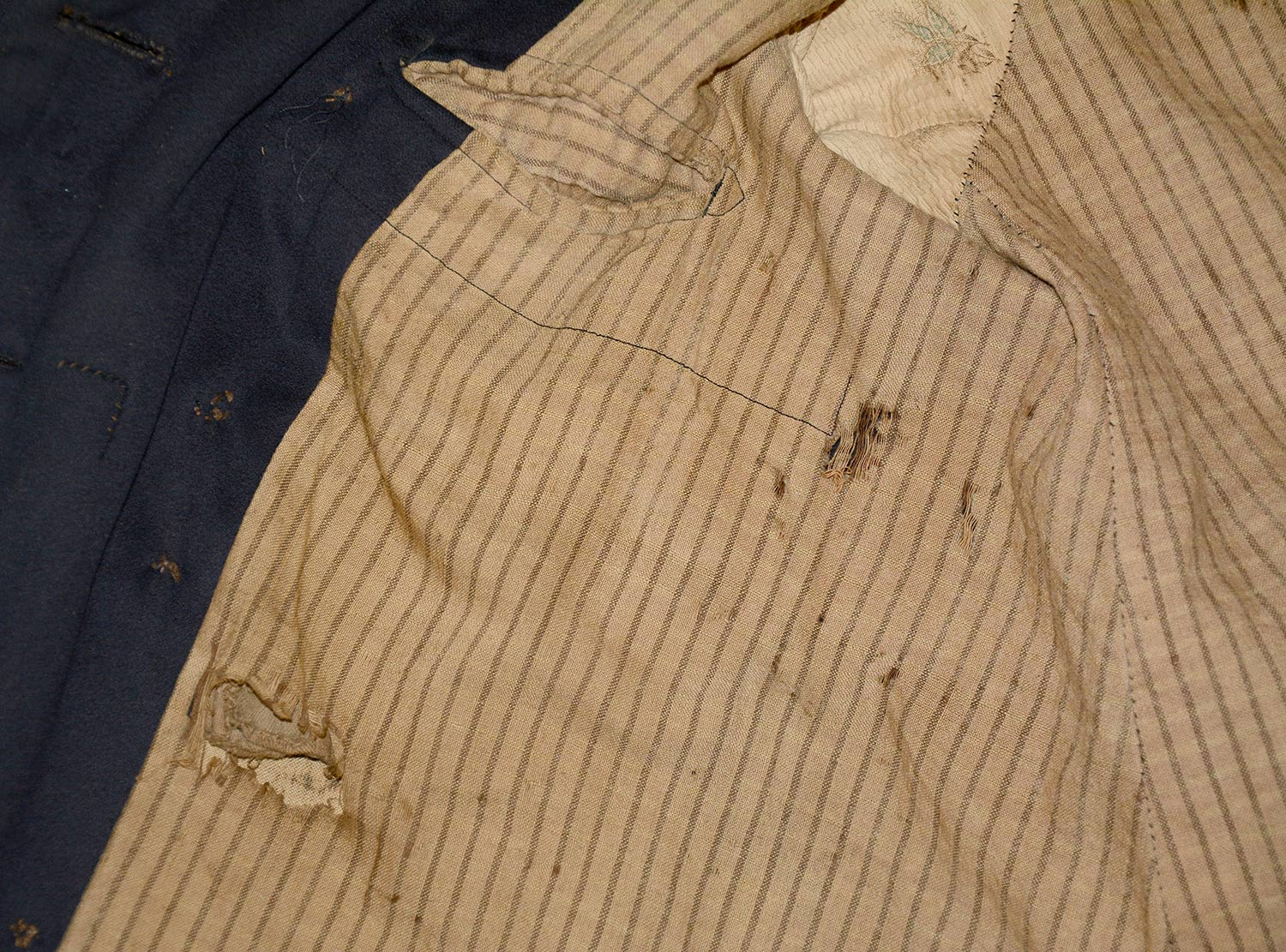
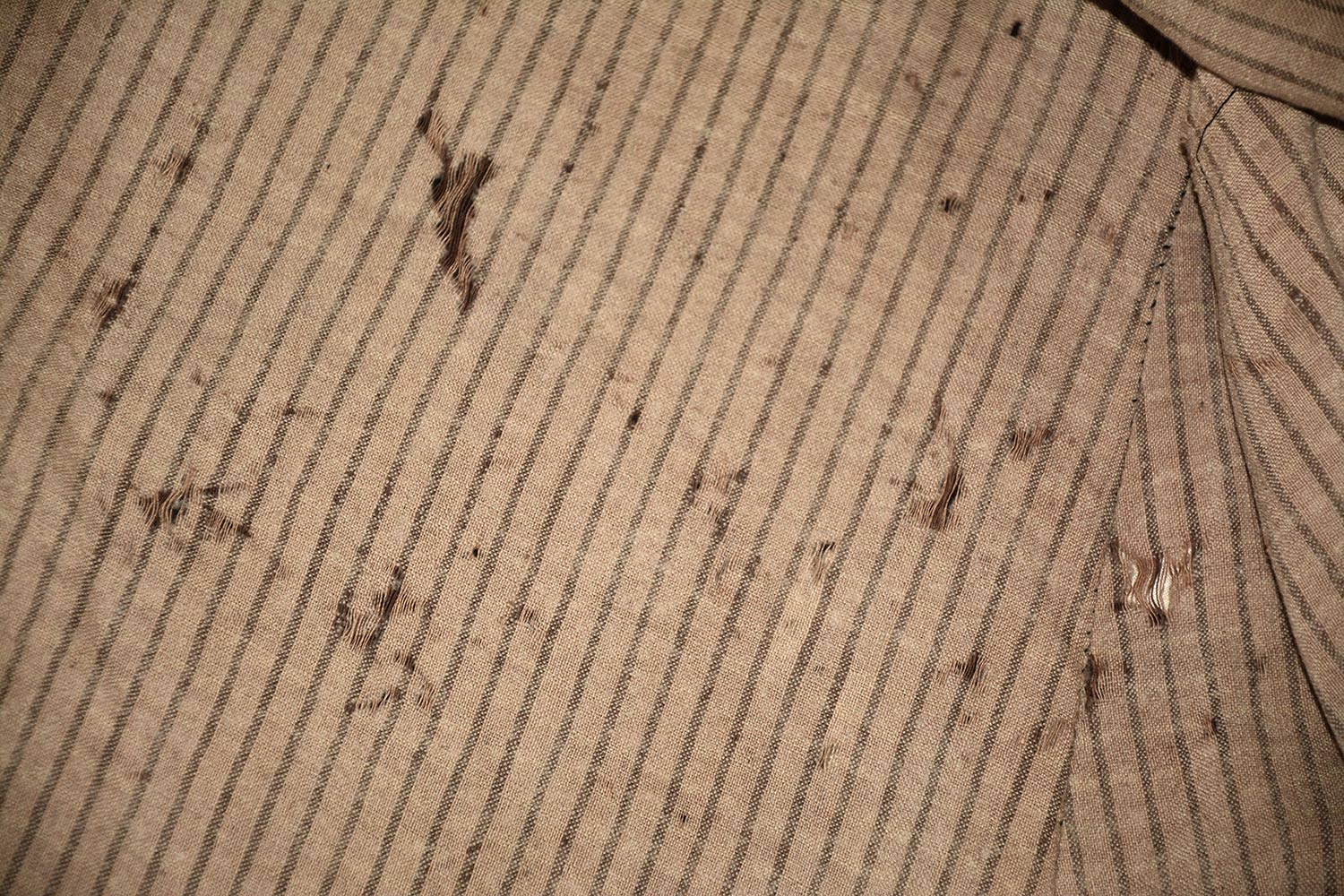
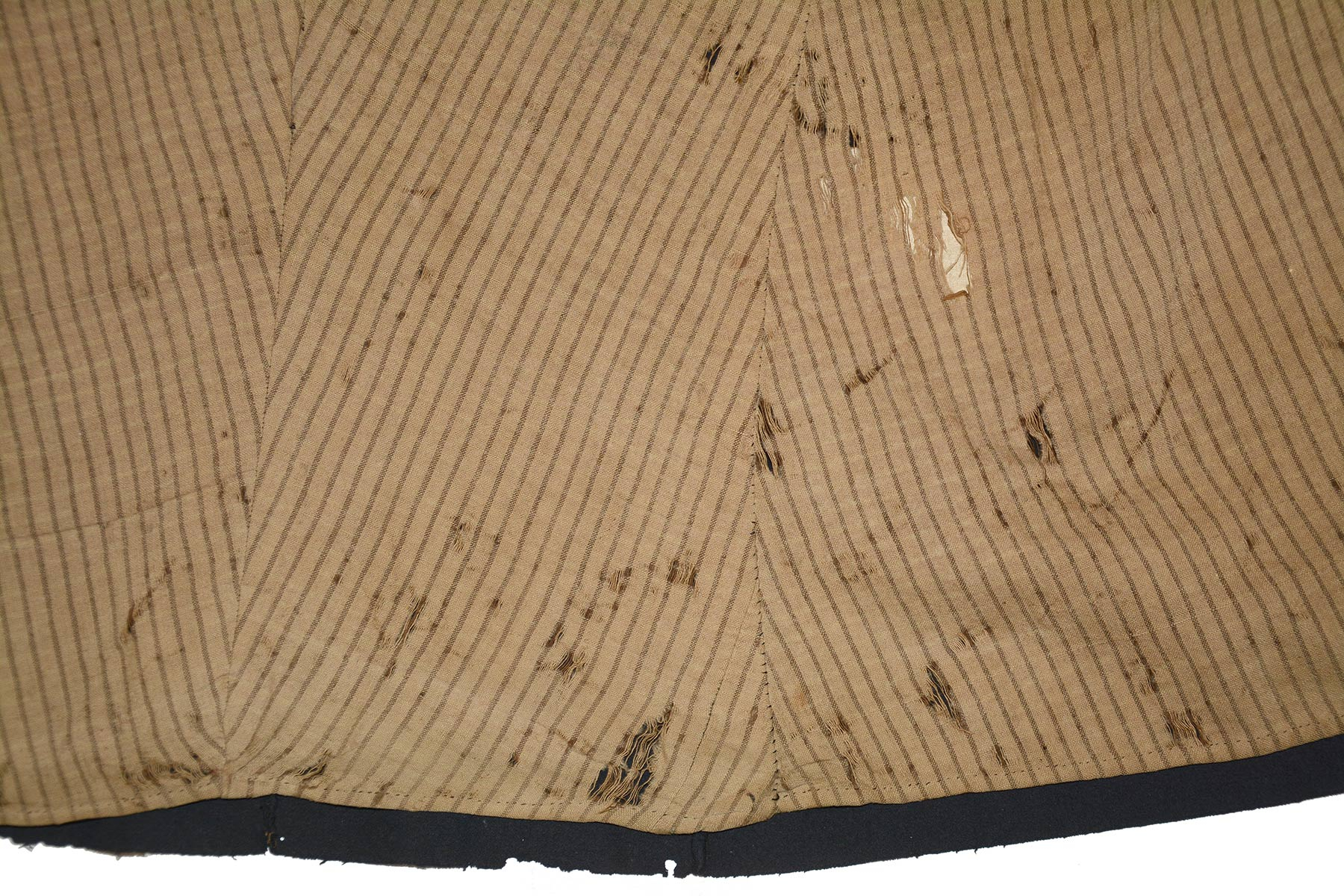
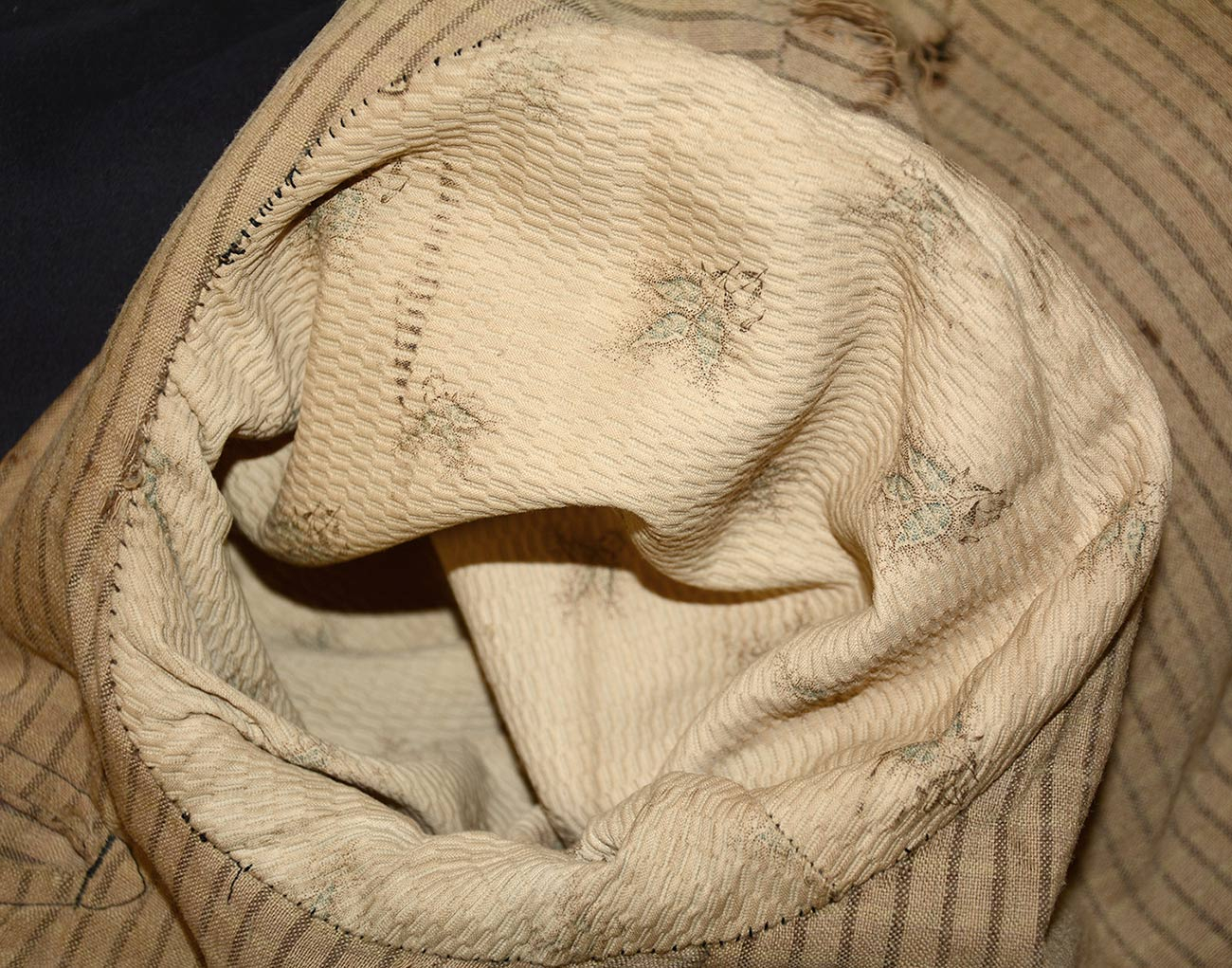
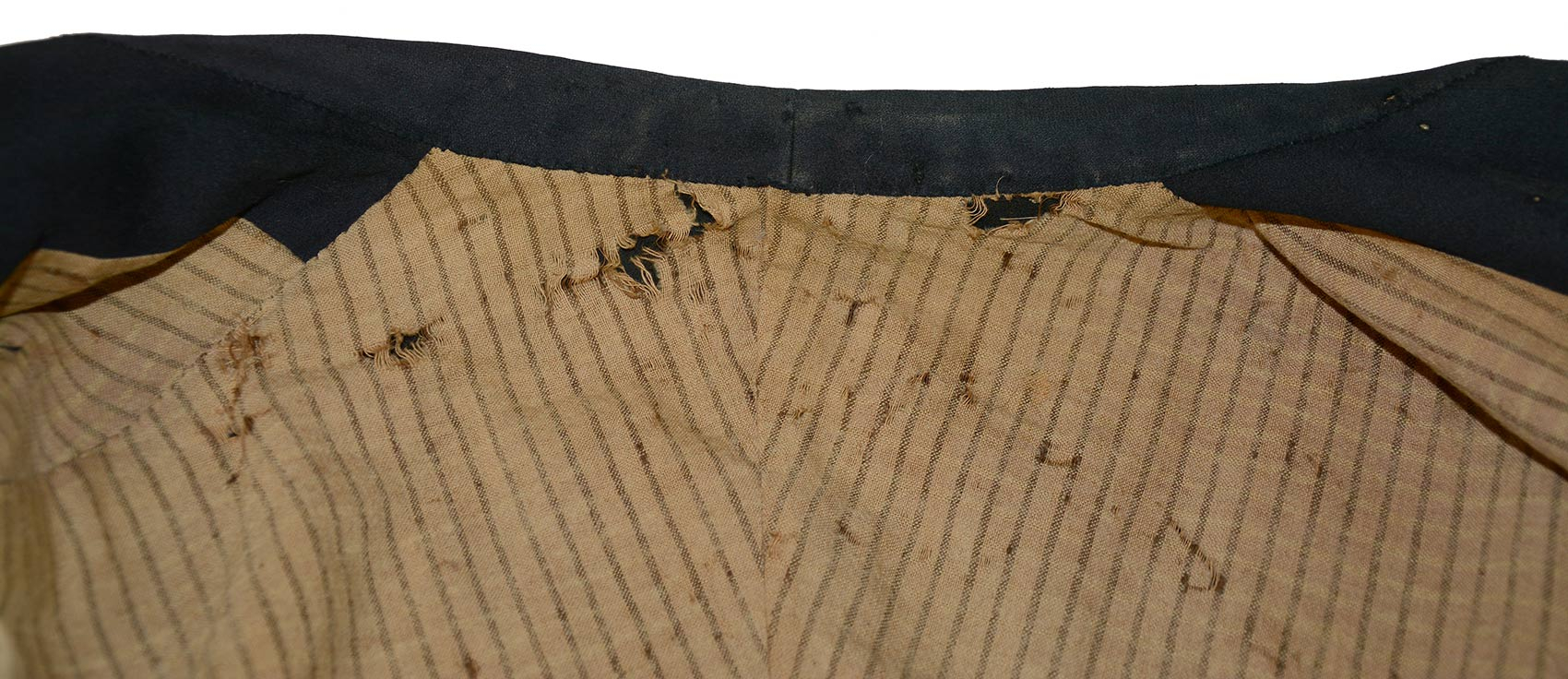
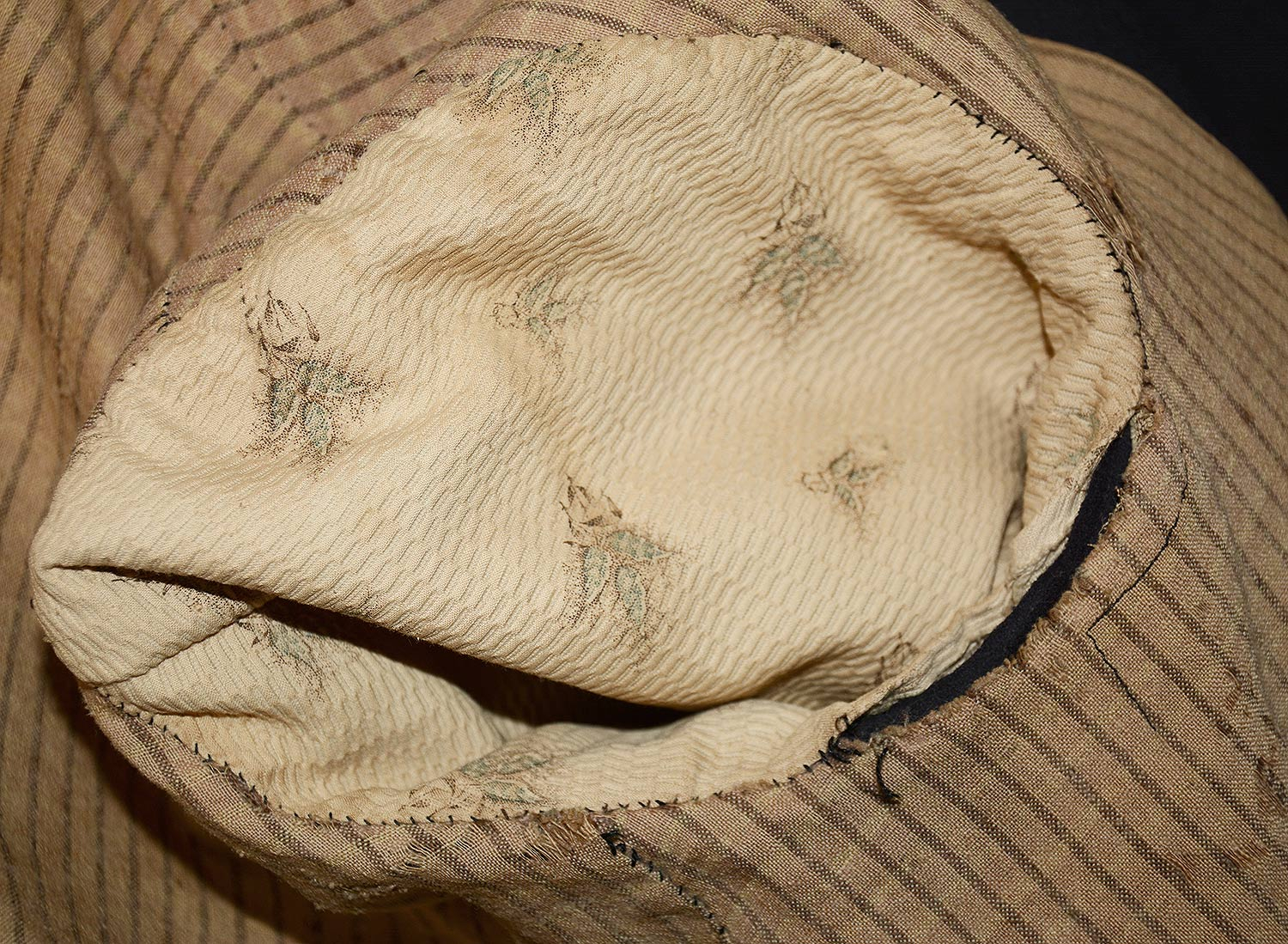
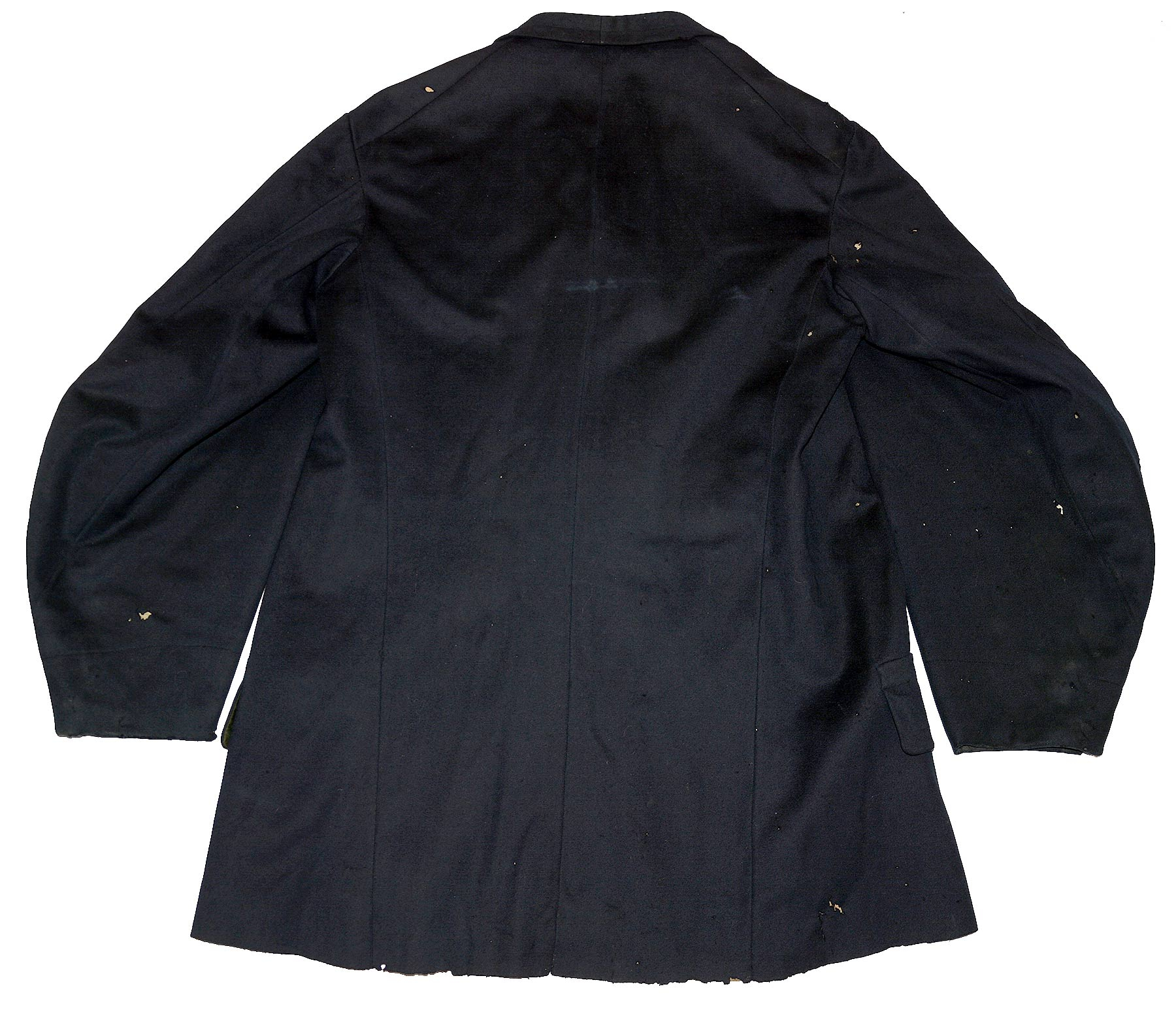
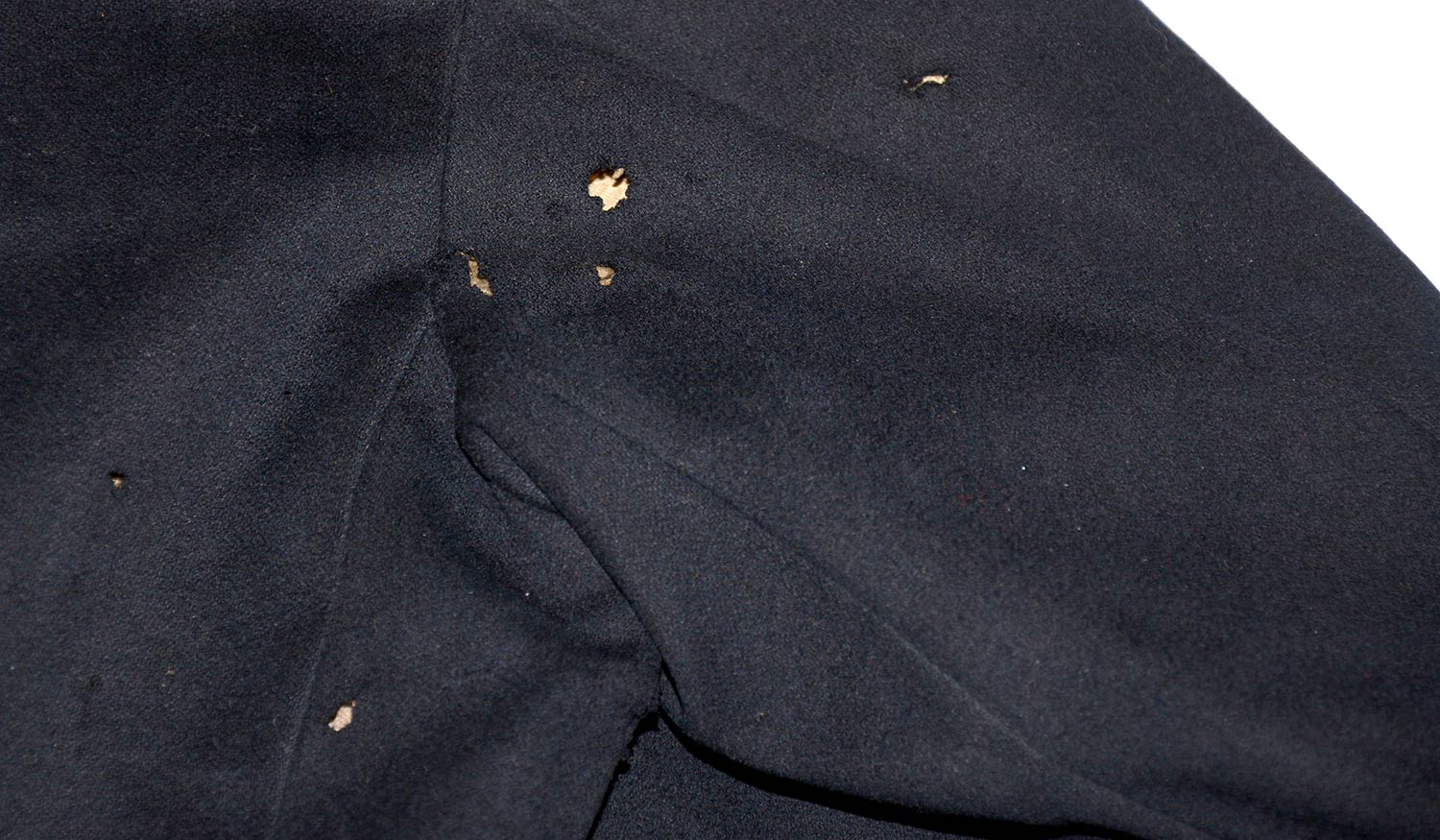
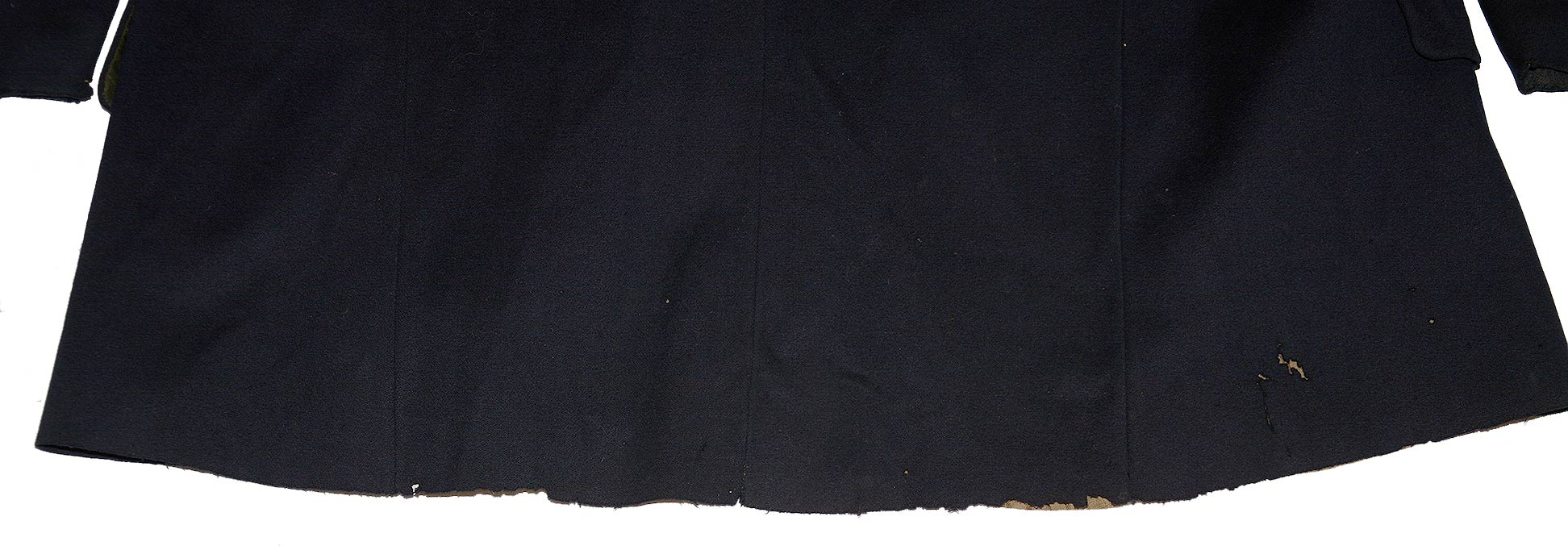
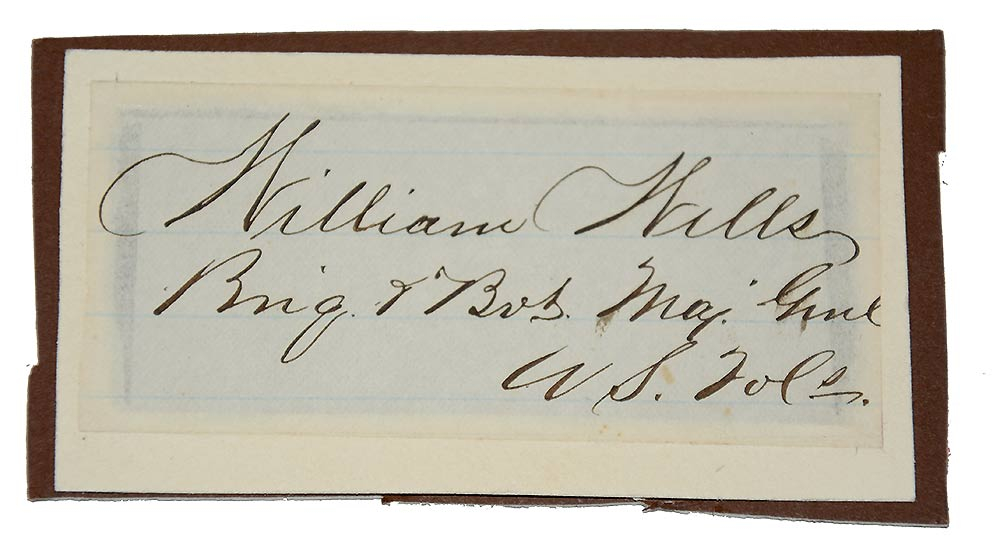
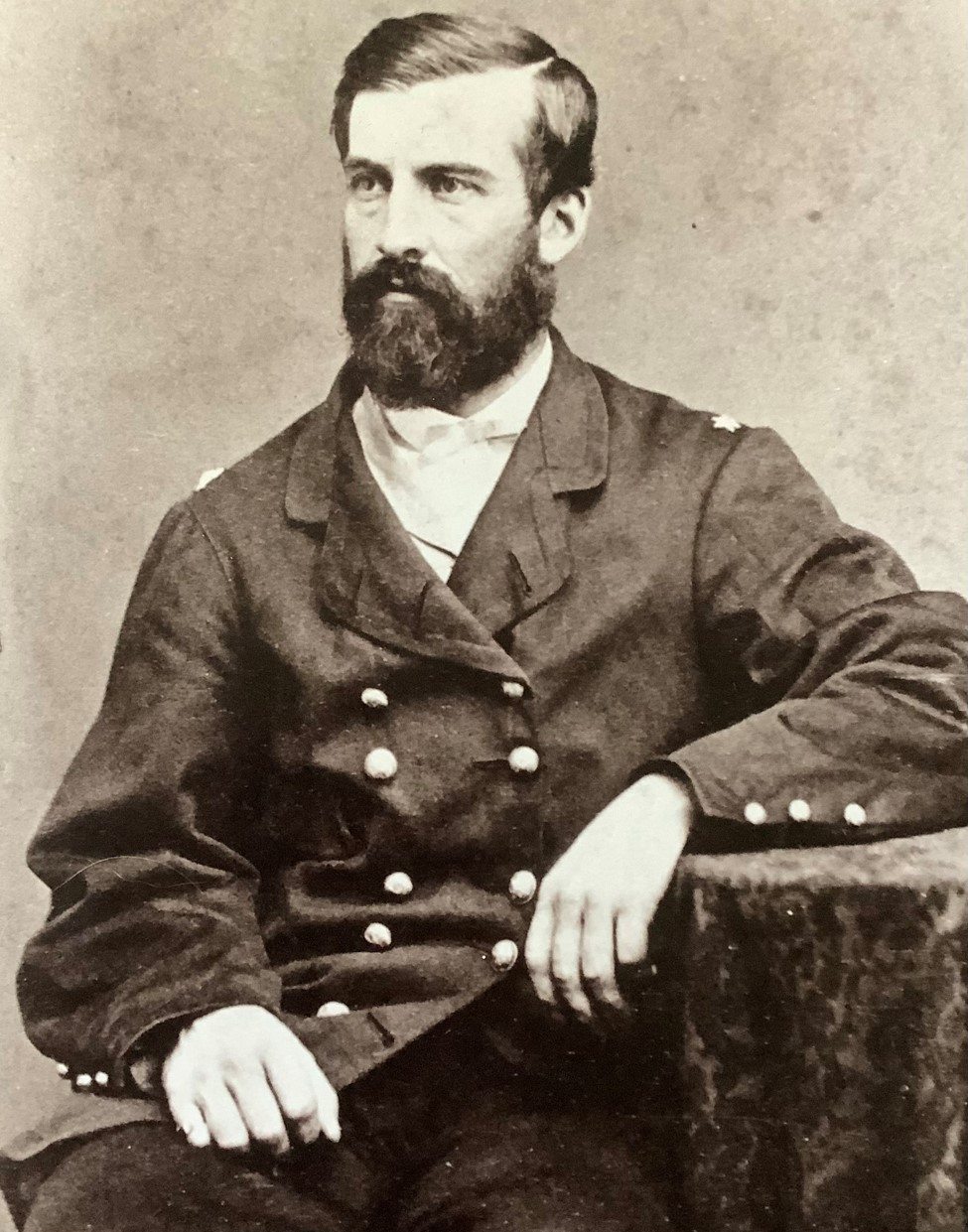
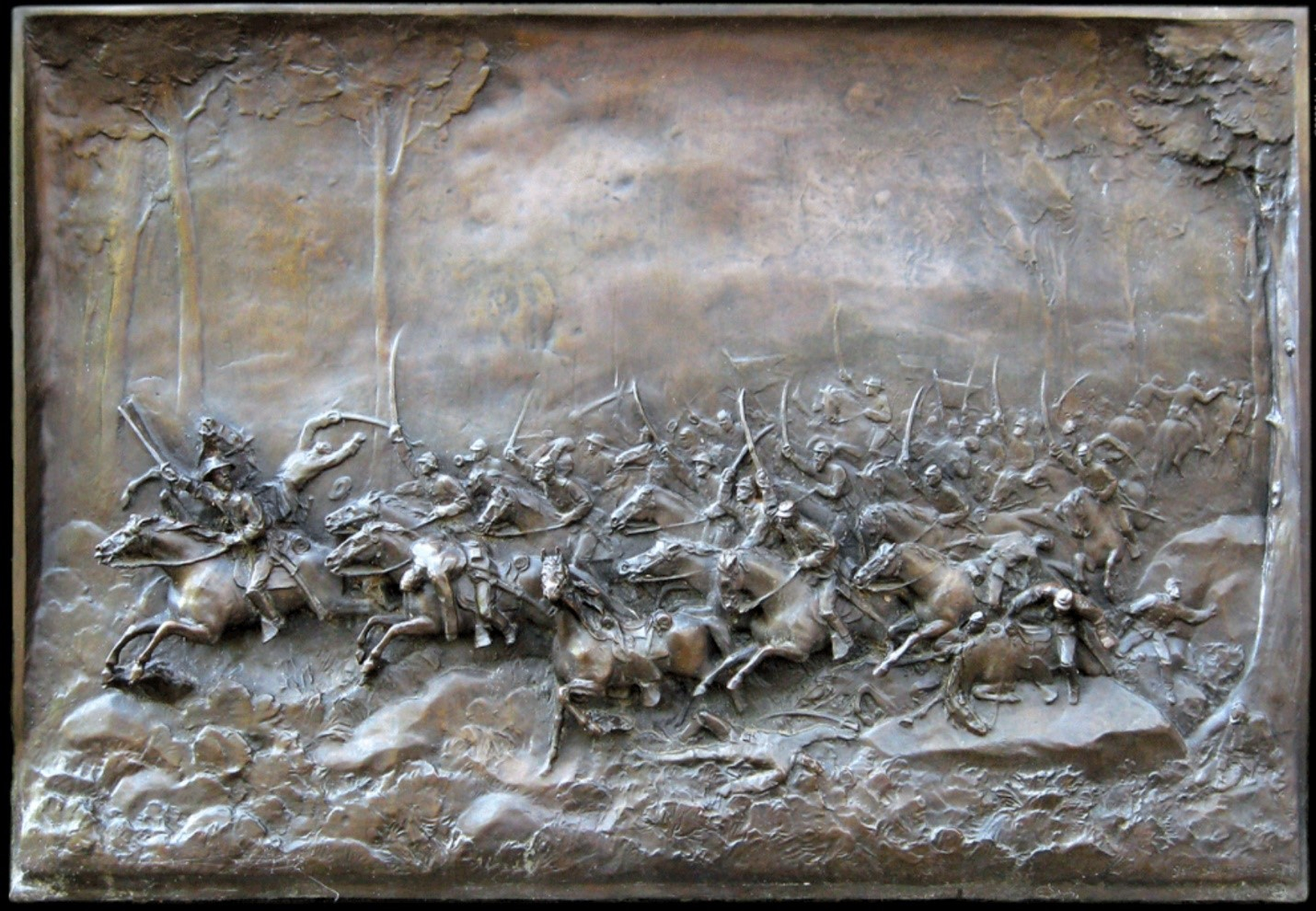
$75,000.00
Quantity Available: 1
Item Code: 1179-281
Shipping: Determined by Method & Location of buyer
To Order:
Call 717-334-0347,
Fax 717-334-5016, or E-mail
This coat is the epitome of a Civil War Union general’s field uniform, a blouse following the popular sack coat pattern of the period, looking somewhat like an enlisted man’s fatigue blouse and suitable for campaign wear, but with a double row of buttons arranged by twos, indicating not just a field-grade field grade officer, but a brigadier general, a rank made clear by his “subdued rank insignia” (to use a modern term) of single silver bullion star on each shoulder, omitting the shoulder strap. Its shorter skirts also make it appropriate for a dashing cavalryman. Custer is shown wearing a similar blouse in a series of photos- likely not a coincidence. The coat belonged to General William Wells and descended in his family until sold in 1974 and comes with a notarized 1976 affidavit signed by renowned dealer Norm Flayderman to that effect. In addition to serving under Kilpatrick and, of course, Sheridan, Wells was a brigade commander under Custer in the Army of the Shenandoah and the Appomattox Campaign, 1864-1865. He also was awarded the Medal of Honor in recognition of his actions at Gettysburg, leading a battalion of the 1st Vermont Cavalry and riding side by side with Farnsworth in the ill-fated charge ordered by Kilpatrick on July 3, 1863.
The pattern was a fashionable alternative to the frock coat, having no waist seam, but with body and shorter skirt of one piece. It is made of blue wool or satinet, double-breasted, fitted with four pairs of general service eagle buttons down each side and a single raised, silver bullion embroidered star directly applied to each shoulder. The collar would stand about 2 ½ inches high, but was intended to be worn flat, with the upper two buttons of the lapels worn open as shown not only by the folds in the cloth, but a photo of General Wells wearing this coat in a CDV backmarked “Vermont Gallery of Art / Burlington,” a copy of which is included in the research file.
The body has four external pockets with flaps: one low down on each side in line with the lowest button; another midway down the chest on the wearer’s left, just below the level of the fourth button; the last on the wearer’s lower right breast, in line with the fifth button and slightly narrower, qualifying as a watch pocket. The lower lapels are rounded. The bottom edge is not hemmed. The sleeves have a fashionable billow: 10-inch width at the elbow and narrow, 5 ½ inch cuff that is non-functional, but given a 1-inch slit at the bottom and fitted with three small general staff eagle buttons. The interior is completely lined in a blue-striped white (now cream colored) loose-weave fabric in the body with a thin batting interlining and single breast pocket on the wearer’s right. The sleeves are lined in a heavier brocade fabric with geometric pattern and printed blue flowers.
The coat is solid, has good color and displays very well. The back has some small moth holes on the upper right sleeve near the shoulder, two 1-inch spots, one, more of a short tear, on the lower edge on that side and two or three small ones between. The front shows some wear to the edge of the watch pocket near the buttons. The wearer’s right lapel shows a dozen moth bites, most of which are small, about a 1/8 inch, with one narrow one about ½ inch long, and a small half-circle tear, about ¾ inch from tip to tip that was sewn closed near the third button hole. These are completely concealed when the coat is buttoned with the left lapel overlapping the right, and likely occurred when the coat was stored that way, there being some moth damage visible on the exposed inside portion of the upper lapel where it was turned over, but covered by the left lapel. The moth holes could be completely and easily repaired and concealed, but as is, they are visible, but not obtrusive, do not affect the structure of the coat, and are not visible when the lapels are left-over-right. The interior shows a few moth bites inside the left lapel and three or four spots where short tears were sewn closed. (These look like old repairs.) The lining is good, but does show some holes, various small wear spots, and pulls, all of which look to be from actual period wear of the garment. The silver bullion stars are firmly affixed at the shoulders and show just expected muting of the color from age and exposure in the field.
Born in 1837, Wells was a 23-year old merchant in Waterbury, VT, when he enlisted in Company C of the 1st Vermont Cavalry on 9/9/61 at Montpelier, but amassed an impressive combat record. Although enlisting as a private, he had helped organize the company and was elected 1st Lieutenant 9/21/61, commissioned and mustered at that rank soon after, and was promoted to Captain on 11/18/61. Early service of the regiment was under Banks in the Shenandoah and then Pope’s Second Bull Run Campaign. A biography states, “He distinguished himself repeatedly in action. He was in the thickest of the fight at Orange Court House, Virginia, August 2, 1862.” Wells was promoted Major 10/30/62 and served with the regiment in posts around Washington in the winter of 1862-63, which involved clashes with Mosby, by whose men he was captured in March 1863. After spending time in Libby Prison, he was paroled in May and returned to the regiment on June 10, in time for the Gettysburg campaign, during which the regiment served in Farnsworth’s brigade of Kilpatrick’s division in the Cavalry Corps. On June 30 he was in the fight at Hanover that delayed Stuart’s juncture with Lee and on July 3 commanded the leading battalion in Farnsworth’s ill-fated charge against the Confederate right, which earned him the Medal of Honor in 1891 for distinguished gallantry in the battle and a statue on the field, erected by the State of Vermont on the spot where the charge began in 1913.
In the pursuit of Lee Wells suffered a saber cut in the fighting at Boonsboro and in the Fall was wounded by a shell fragment at Culpeper. In early 1864 he was with the regiment on the Kilpatrick-Dahlgren raid on Richmond, and was respected enough by Kilpatrick to be given temporary command of the 7th Michigan. In May 1864 he took part in Sheridan’s cavalry operations in support of Grant’s Overland Campaign, helping part in opening the fighting at the Wilderness and was at Yellow Tavern when Stuart was mortally wounded. On the death of Col. Preston in June, he assumed command of the regiment and was commissioned Colonel as of 6/4/64 and mustered in 7/2/64. This later proved a problem for record keepers in Washington since the regiment’s strength at the time did not permit appointment of a Colonel, but did not prove an impediment at the time and he not only remained in command during the regiment’s service under Sheridan in the Shenandoah, but on September 19 was given command of the 2nd Brigade of Custer’s 3rd Cavalry Division, seeing action at Tom’s Brook and Cedar Creek, where he was very active in the cavalry advances late in the day that turned the battle into a Confederate rout, hid brigade reportedly capturing 45 artillery pieces. He afterward returned to the Richmond/Petersburg front and was brevetted brigadier general of volunteers to date February 22, 1865, perhaps both as tribute to his bravery and ability, and to quiet concerns about rank: Sheridan specifically refers to him as “Brevet-Brigadier General Wells” in an April 2, 1865, dispatch to Grant. He took an equally active part in the vital cavalry operations of the Appomattox Campaign, and was reportedly about to lead a cavalry charge when halted by Custer on April 9. He was commissioned as a full brigadier general on May 19, and given an additional brevet to major general to date March 13, 1865, for “gallant and meritorious services.” His duties in the latter part of his service included occasional command of the division by seniority and regular assignment to that command on May 22. After Sheridan and Custer had both been assigned to Texas, he served as commander of the cavalry corps from June 1 to June 24, and from that date to July 24 as a brigade commander in the 22nd Corps and was officially mustered out in January 1866.
A biography published as part of the dedication of his statue at Gettysburg lists the engagements in which he took part. Even allowing for some duplication or exaggeration of the scale of the combat, it is impressive: “During his services with the First Regiment Cavalry he took part in the following battles and skirmishes: Middletown, Winchester, Luray Court House, Culpeper Court House, Orange Court House, Kelley s Ford, Waterloo Bridge, Bull Run, Warrenton, Hanover, Hunterstown, Gettysburg, Monterey, Leitersville, Hagerstown, Boonsboro, Hagerstown, Falling Waters, Port Conway, Culpeper Court House, Somerville Ford, Raccoon Ford, James City, Brandy Station, Gainesville, Buckland Mills, Falmouth, Morton s Ford, Mechanicsville, Piping Tree, Craig s Meeting House, Spottsylvania, Yellow Tavern, Meadow Bridge, Hanover Court House, Ashland, Hawes Shop, Bottom Bridge, White Oak Swamp, Riddles Shop, Malvern Hill, Reams Station, Nottoway Court House, Roanoke Station, Stony Creek, Reams Station, Winchester, Summit Point, Charlestown, W. Va., Kearneysville, and Opequan or Winchester. As Brigade and Division Commander he participated in the following battles and skirmishes: Opequan, Front Royal, Gooney Manor Grade, Milford, Waynesboro, Columbia Furnace, Toms Brook, Cedar Creek, Middle Road, Middle and Back Road or Middletown, Lacey s Springs, Waynesboro, Five Forks, Scott’s Corners, Namozine Creek, Winticomack, Appomattox Station and Appomattox Court House.”
Wells returned to Waterbury after the war and devoted himself to a number of business interests, including a successful partnership as a wholesale druggist, moving the company soon after to Burlington, where he thereafter resided. He was also active in military and veteran affairs, being a member of the G.A.R. and M.O.L.L.U.S., and serving as Vermont Adjutant General 1866-1872. He held several other civic posts as well, including collector of customs for thirteen years, and was a state senator 1886-1887.
Wells’s blouse is accompanied by a research file that includes a signed 1976 affidavit from dealer Norm Flayderman testifying to the blouse’s purchase in 1974 from a direct descendant of Wells and a 1987 letter between collectors when the blouse again changed hands. The blouse was subsequently on display at the Texas Civil War Museum. Copies of his service records in the 1st Vermont are included, as are several short biographies. The booklet published on the dedication of his statue at Gettysburg is available in the original and reprint. His personal papers are at the University of Vermont and his letters, largely to his future wife, were published in 2007, with copies still available. As part of our description we illustrate the bas-relief panel illustrating Farnsworth’s Charge on Wells’s monument at Gettysburg. Based on accounts of survivors, Wells is shown with sword raised at left, continuing to lead the charge, as Farnsworth throws up his arms and falls, shot from his horse, just behind him and to the right. [sr] [ph:L]
~~~~~~~~~~~~~~~~~~~~~~~~~~~~~~~~~~~
THIS ITEM, AS WITH ALL OTHER ITEMS AVAILABLE ON OUR WEB SITE,
MAY BE PURCHASED THROUGH OUR LAYAWAY PROGRAM.
CLICK HERE FOR OUR POLICIES AND TERMS.
THANK YOU!
Inquire About UNION CAVALRY GENERAL WILLIAM WELLS’ FIELD BLOUSE: MEDAL OF HONOR FOR GETTYSBURG WHERE HE RODE IN THE LEAD OF FARNSWORTH’S CHARGE; BRIGADE COMMANDER UNDER CUSTER; BLOUSE ACTUALLY WORN IN ONE OF HIS PHOTOS
Most Popular
Historical Firearms Stolen From The National Civil War Museum In Harrisburg, Pa »
Theft From Gravesite Of Gen. John Reynolds »
Selection Of Unframed Prints By Don Troiani »
Fine Condition Brass Infantry Bugle Insignia »
Large English Bowie Knife With Sheath 1870’S – 1880’S »
Imported (Clauberg) Us Model 1860 Light Cavalry Officer's Saber »
featured item
CONFEDERATE GENERAL THOMAS “STONEWALL” JACKSON’S SIGNED, PERSONAL COPY OF A COMPLETE TREATISE ON FIELD FORTIFICATIONS
Thomas "Stonewall" Jackson Signed Copy of His West Point Textbook, A Complete Treatise on Field Fortifications. The future Confederate general's bold signature, signed "Thos. J. Jackson" ca. 1846, occurs at the top of the front free endpaper. The… (1179-682). Learn More »


